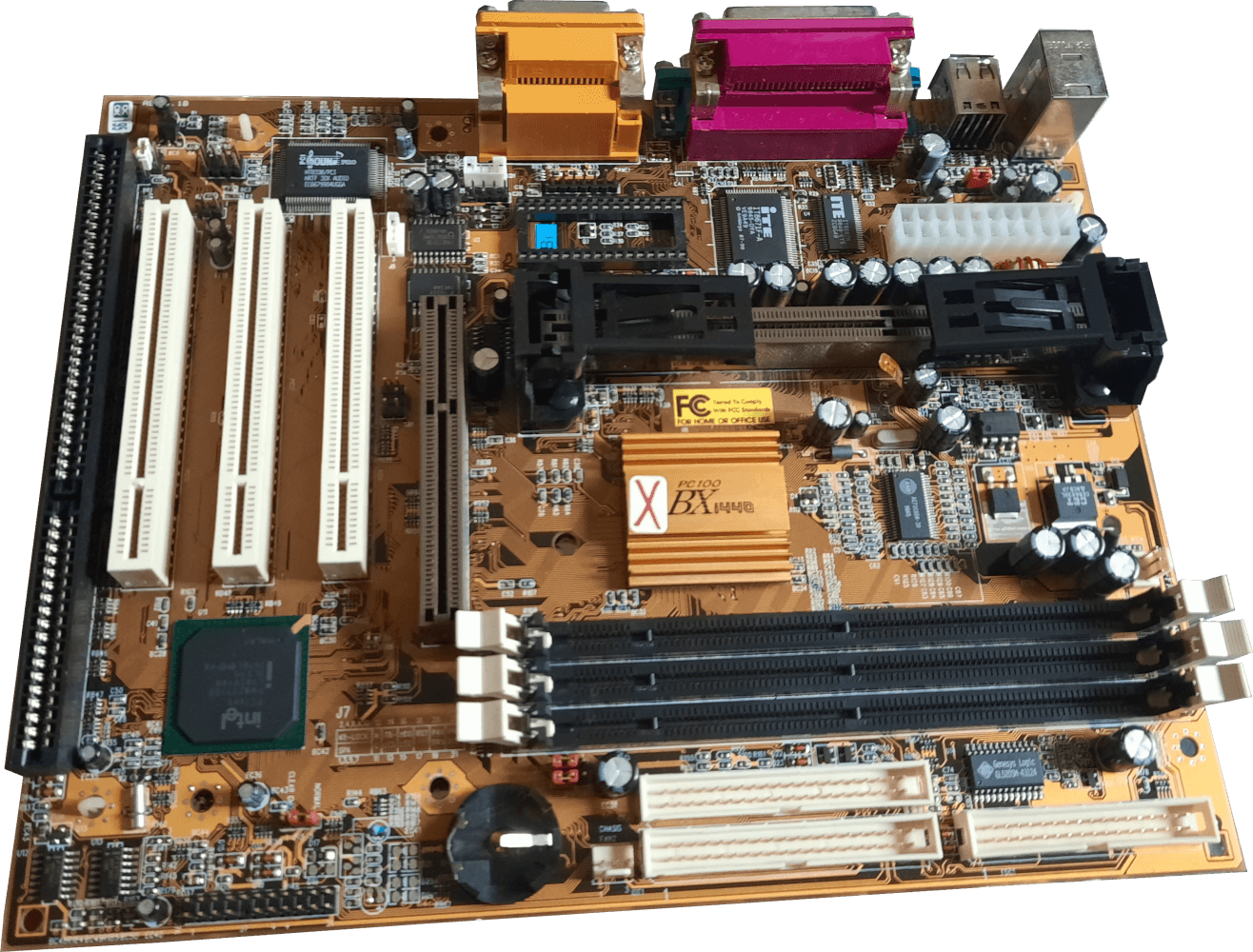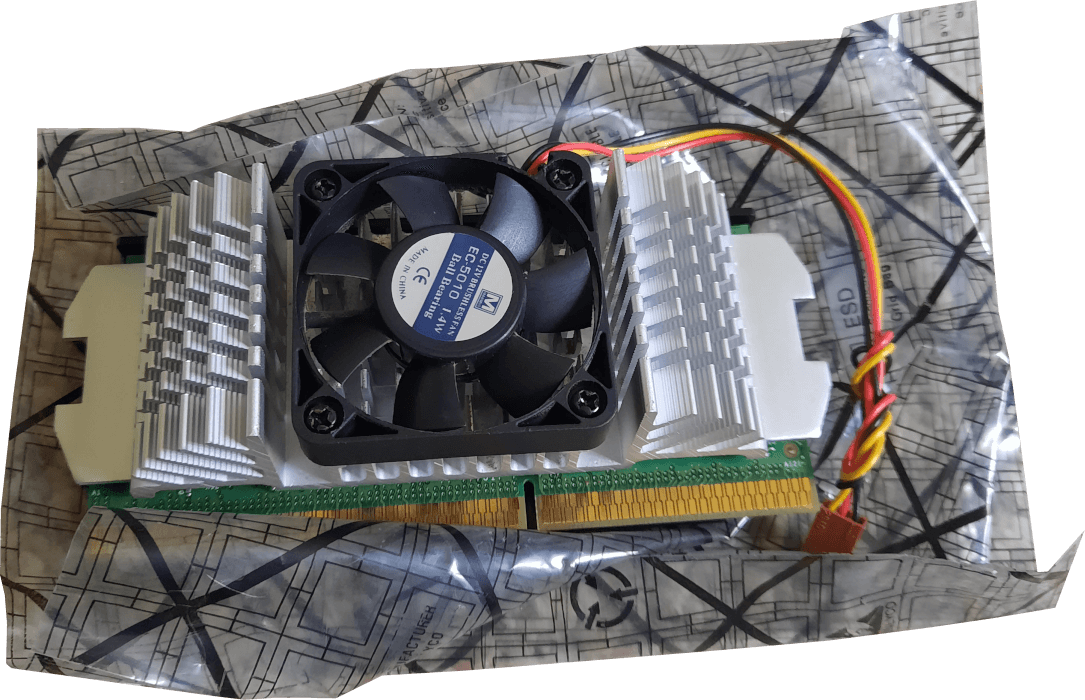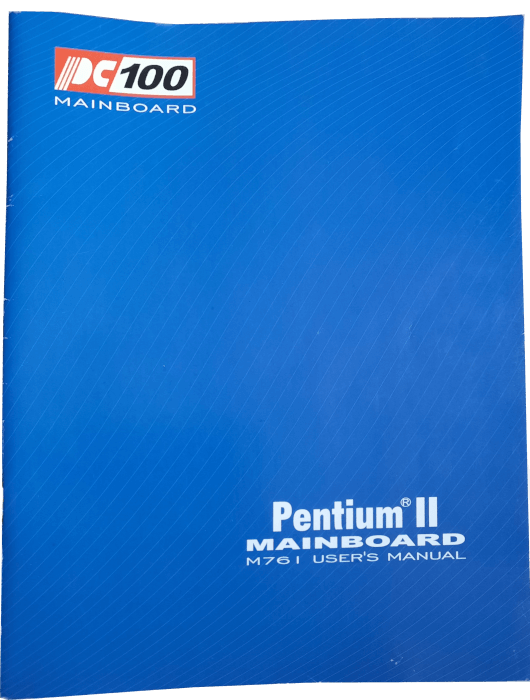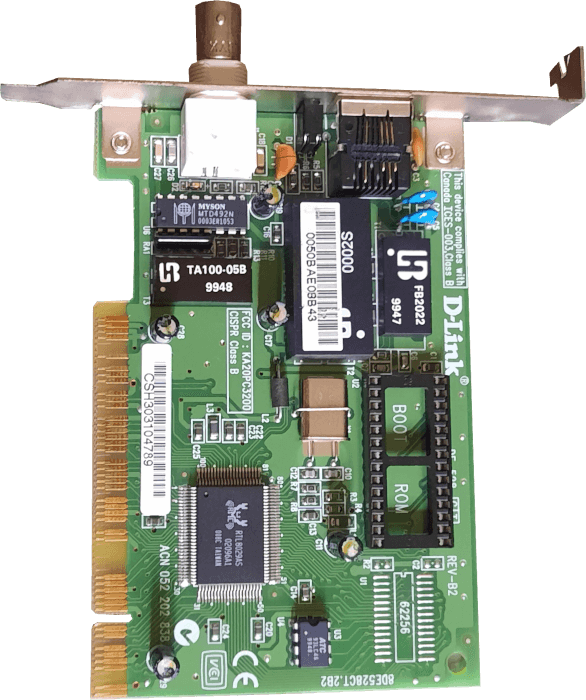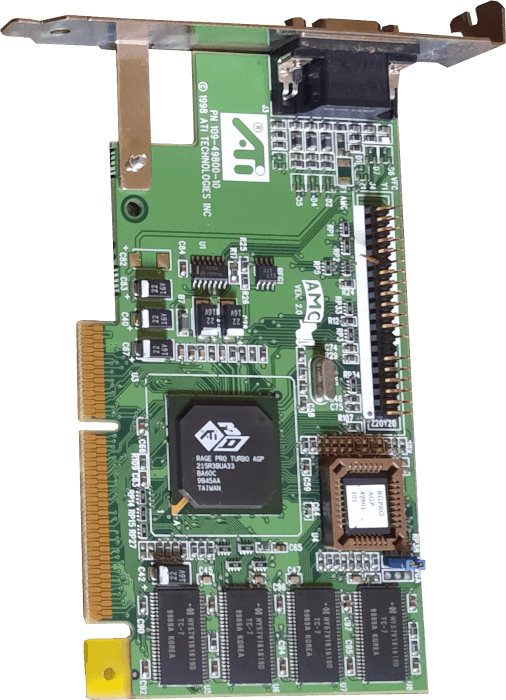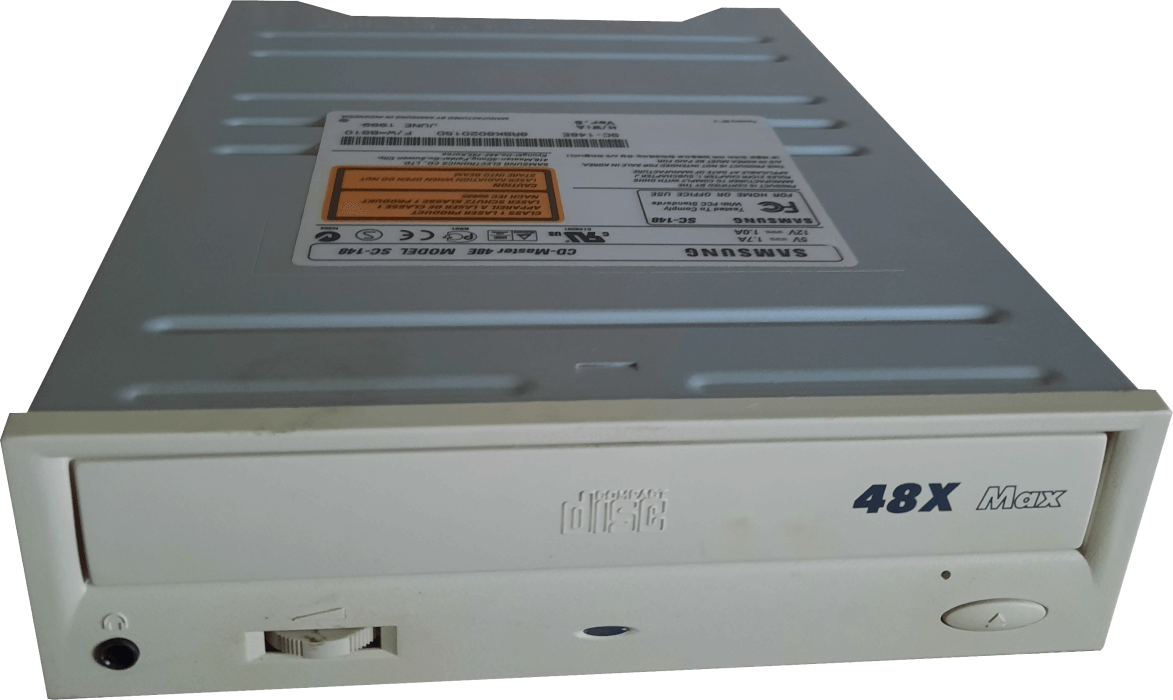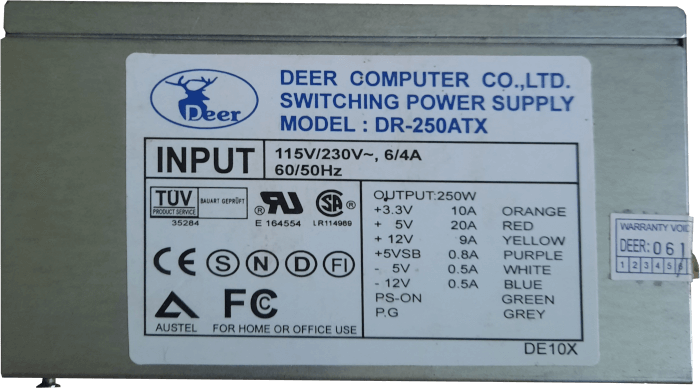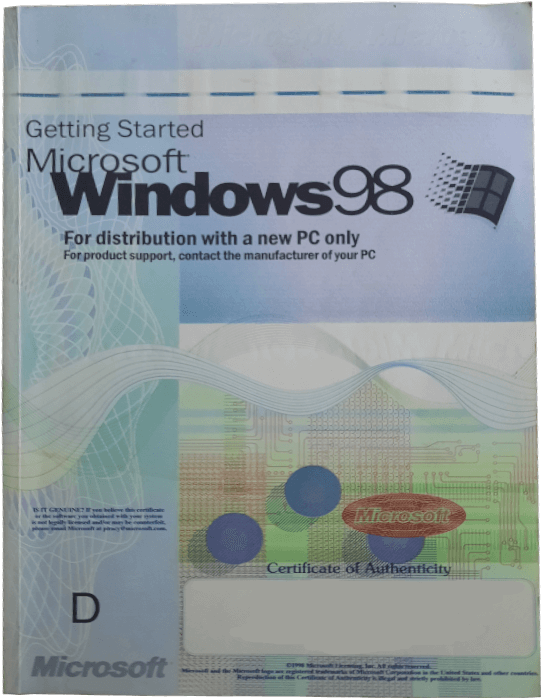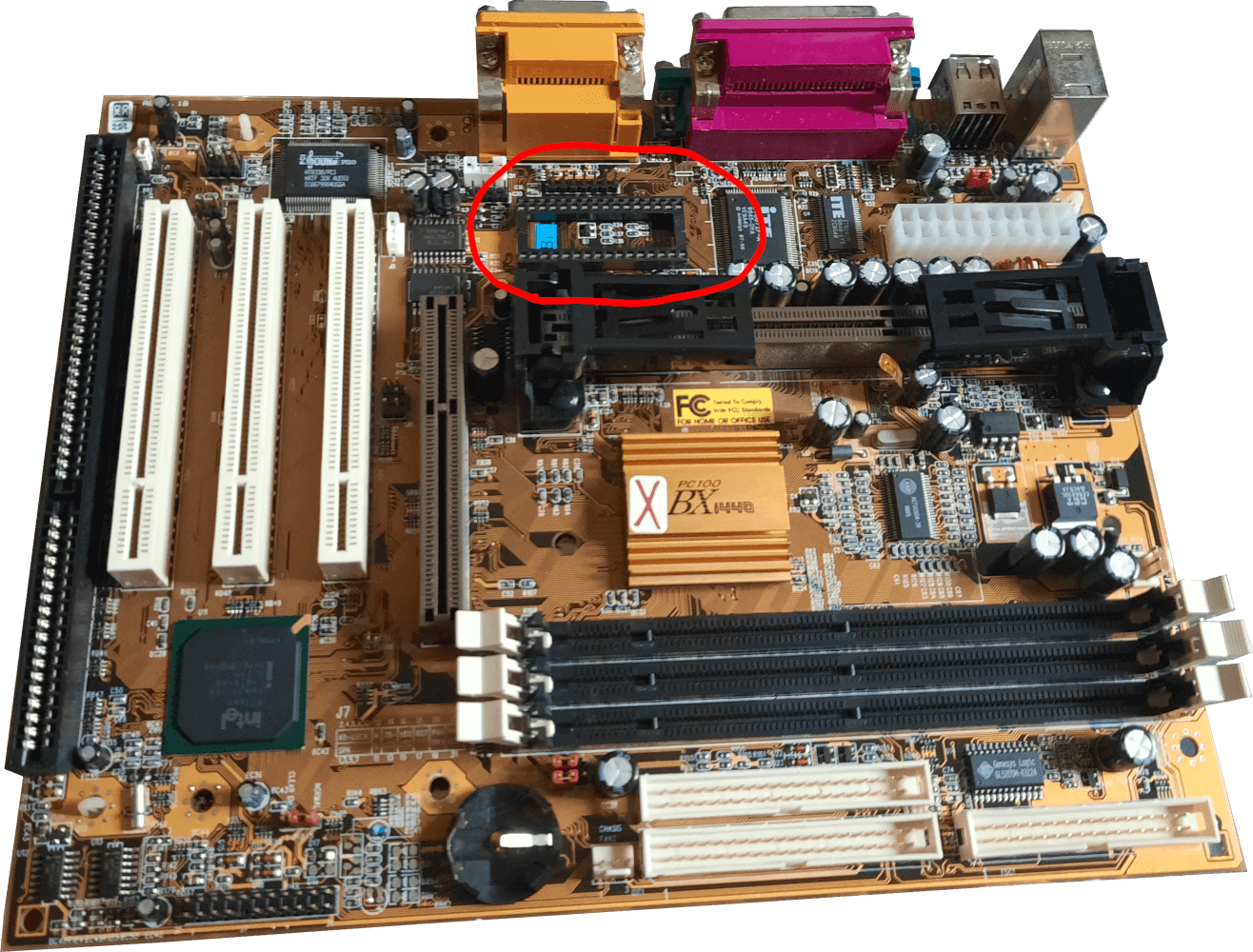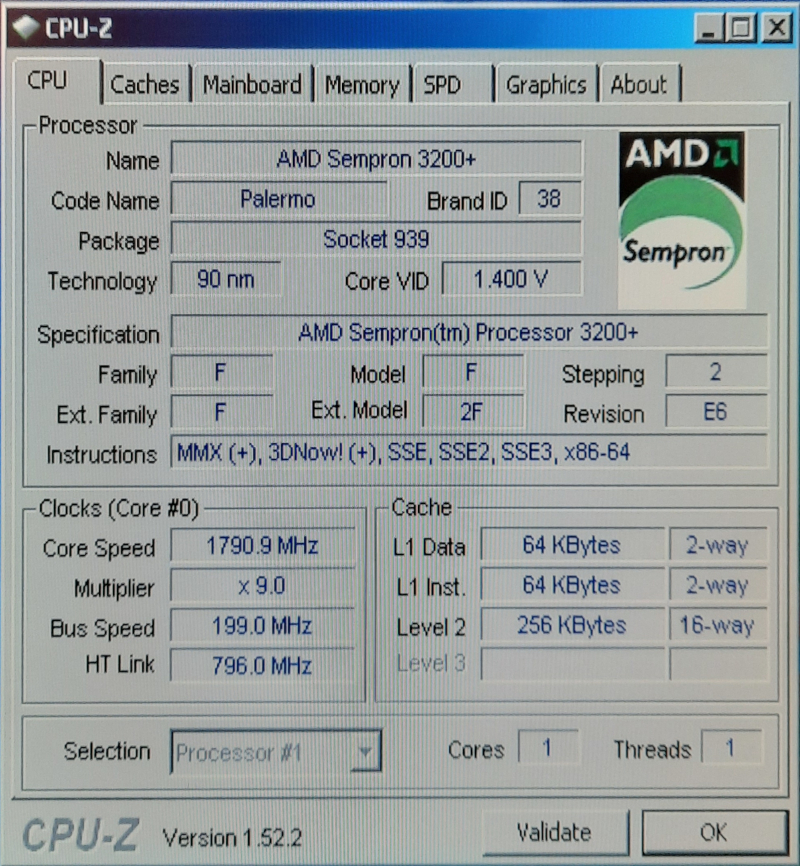So I found a computer in my basement
In a box in the basement closet, among the mildewy old coats and overflowing tackle boxes, there it was. A cardboard box, unassuming at first, but filled with various computer parts still in the packaging.
Among the contents were:
Which is half of a computer. It was missing RAM, a hard drive, internal cables (IDE), and a case. Luckily I was able to find the RAM for cheap on Ebay and there were a few old hard drives kicking around from my mom's work, which need a SATA to IDE converter to work but otherwise should be ok.
Then I noticed something.
Fuck.
Replacing the Bios Chip
I started by searching Ebay for the BIOS chip; of course, I found nothing. I then looked up the motherboard model and was fortunate enough to find a link to the manufacturer's website. With the help of the Wayback Machine, I found a page offering BIOS updates and information on how to update it, as follows:
"Precaution your system will not startup due to fault procedure to update the FLASH ROM BIOS. We don't suggest you doing directly down load the update BIOS to your system's FLASH ROM. The better way is saved the new file in your Hard Disk or Floppy Disk, and do duplicate into a new EPROM or FLASH ROM using EPROM WRITER (i.e. EPROM PROGRAMMER), then, you are shutdown your system and put a new BIOS to replace the old one, but you must keep the old BIOS until the new BIOS running in perfect, perhaps, the mistakes will be causing your system not started-up again."
Very eloquently written, if I do say so myself. But anyways, while I know very little about this topic, it was obvious that it was possible to just make another BIOS chip by uploading the fireware onto a ROM chip of some sort. The question was what kind of chip? Are they all intercompatible? Or do I need a specific kind? So I searched and searched and found very little on the topic. I did, however, find many EEPROM programmers for like $2 on Aliexpress. Unfortunately I didn't know whether they would work because I didn't know what chip.
Then I looked at the manufacturer's website again and realized it said exactly what chip I needed... on that same page... in big bold red text...
So it's an AT29C020. That made it way easier (actually no it didn't).
Now I just needed to find a way to flash the chip. An Aliexpress programmer wouldn't work with this type of chip unless I got the $40+ one, and I didn't and still don't feel like spending any significant money on this thing. After all, my entire goal is to just have an old computer to dick around on, and that's a lot of money to spend on something I'd use once.
My options seemed to be:
- Buy the chip on Ebay along with some shift registers and use the Arduino at my school to flash it.
- Buy the chip on Ebay and send it to some guy in Germany who flashes BIOS chips for a fee.
- Call around local computer repair places and see if they would be able to do it.
- Ask someone in the computer science department at my school if they have the resources to do it.
While I was figuring out which one was the best option, my dad just came to me one day and said, "I remember taking your brother's computer to a repair shop because it would start but it wouldn't run, and the guy replaced the motherboard and asked if I wanted the old one back and I said sure and I'm pretty sure that's the one in the box."
*facepalm*
A New Hope (?)
So at this point I had no idea what to do. Was it worth it to keep going with this motherboard, knowing it might not work? The missing BIOS chip would suggest that that was the problem, and my dad later said he thought it had a virus. It's possible that the BIOS was infected and the repair guy couldn't flash a new chip so he replaced the motherboard and removed the chip from the old one just in case. In that case it should be fine. On the other hand, the little sticker with the red X on the chipset was starting to look a little suspicious. I also wondered why the actual fuck my dad took back a broken motherboard and kept it in the basement for 20 years, and the answer to that it that no one ever throws anything out in my house. But that doesn't explain why all the other parts are in the box too, when they should have stayed in the computer with the new motherboard.
So I did what any reasonable person does when they don't know how to continue with a project: pretend you don't have a problem and continue buying crap that would be useful if you didn't have said problem.
(Damn, this is why my basement is like this.)
So I bought another hard drive that's actually small enough to use with Windows 98, and a CD of DOS games. Then I went to Value Village and found they had desktop computers for sale. $19.99, which is a great deal, considering that I couldn't even find a case for less than $40. Also considering they sell used coats for $35 there, it felt like a steal (whereas buying used coats would feel like being stolen from). So I bought one, a Compaq Presario from 2005.
At first I though I might be able to make use of the motherboard in case the one I had was useless, but it takes an AMD processor in a socket, so it wasn't compatible with the Pentium III. It did, however, come with everything needed to run by itself: an 80 GB IDE hard drive, integrated graphics, a DVD drive, and RAM. It apparently came with 256 MB of DDR RAM, but it was sitting loose in the case along with a 512 GB stick. When I got to the cash register, the handheld barcode scanner was broken, so the cashier just fucking picked it up and twisted it around trying to scan it on the normal scanner. Cue me cringing as I heard the RAM get tossed around inside. He set it back in the cart upside down too. Nothing was damaged, thankfully, but the one stick got rammed (no pun intended) between the top of the case and the power supply and it took me a good few minutes of rifling around with a plastic knife to get it out.
So when I got the time, I hooked it all up and turned it on. And it worked! Sort of...
Fixing Another Slightly More Coherent Piece of Crap
Well, it POSTed. That's about it.
There seemed to be no real BIOS settings other than choosing which drive to boot from (HDD vs. DVD). Entering set-up prompted me to insert a boot disc. One Windows XP installation disc later, and I was still nowhere. Attempting to repair the drive failed every time, and doing a fresh install would bluescreen when it asked to choose a partition and none came up. I did determine, however, that the 256 MB RAM was garbage because if I used it the text would start getting jumbled, or else it wouldn't boot and would just beep.
A friend suggested that you had to use the installation disk to create a separate boot disk, and while it doesn't seem to work this way with Windows XP, it did give me the idea of trying to boot directly from a CD. Unfortunately most of the programs available for creating these live CDs seem to be inaccessible now, but I was able to find a disc image of one created with BartPE on Archive.org. I tried it, and it took like 10 minutes to load, but it worked.
I was welcomed by a janky looking version of Windows XP with some diagnostic software installed. It took about 2 seconds to determine that the drive was dying, then over an hour for it to run a full scan to make sure there was nothing on the drive I wanted (it would have taken less time if it didn't have to spit out "sector read error" every 30 seconds). I was also able to get a page of stats about the CPU, which will probably mean more to you than it does to me.
Anyway, whoever had the computer beforehand was either very boring or had removed most of their files, so I didn't bother to transfer anything off the drive.
So I needed to replace the drive. Luckily I had like 7 SATA hard drives kicking around that my mom brought home from work and the motherboard (an MSI Amethyst-M) supports both SATA and IDE, so I was able to use one of those. However, every single one of them came in a little protective case for mounting in a server rack, and some brainless numbnut used the wrong damn screws. I tried every. single. screwdriver. in. the. house. None of them were the right size and had enough torque to remove them without stripping them. I also tried just using the drive in the case, but it was too big to fit in the 3.5" bay and too small to fit in the 5.25" bay, so that didn't work either. Eventually my dad came up with the idea of cutting into the outside edge of the screw with a pair of sidecutters and using them to unscrew it, which finally worked. One SATA to Molex power adapter later, and I finally had a functioning hard drive.
Why is Windows Like This™?
Finally having a functioning hard drive in my computer, I now needed to reinstall Windows on it. The computer had originally been running Windows XP Home Edition, so I decided that would be the best option, since I knew it would run well and already had the disc from trying to repair the old drive. It's also the perfect in-between for operating systems; it has support for DOS and 16-bit programs while also having some support for more modern programs. The most important thing, though, was that it wasn't Windows Vista *shudder*.
Before replacing the hard drive, attempting to install Windows would lead to it bluescreening when attempting to partition the hard drive because there was nothing to actually partition; it was just sector error after sector error. This time around, I was able to partition and format the disk, get some system files onto the machine, and have it reboot before it bluescreened. :') Searching for the error code told me that this was the result of some missing system files, but because I didn't have Windows fully installed, I couldn't check whether the files were there or not. I ended up trying to install Windows again, but this time when it went to format the disk, I chose the slow option instead of the fast option because it took literally seconds to format the entire 1TB disk and that Seemed Wrong. When it said it was the slow option, they weren't kidding; it took nearly three hours to format the entire drive and I really don't think that Windows XP was designed for drives this big. But it fixed the problem so who am I to complain?
I was welcomed once again by the Windows XP home screen, this time fully functional and not some dollar store live CD edition. I spent some time customizing the appearance before I came across the second problem: Windows hounding me to activate the operating system. You see, back in ye olden days, you would just connect your computer to the Internet and it would activate itself, unless you were some poor schmuck with no Internet connection in which case you had to talk to someone over the phone. But it's 2023, and Windows XP hasn't seen any support in nine whole years (unless you have it running on a cash register). No one at Microsoft will entertain your stupidity in trying to use a 22 year old operating system. Even if you're using it legally.
Basically I had 30 days to find a way to activate the operating system or Windows would shut me out and I'd have to reinstall everything. Naturally, when faced with such a challenge, I shoved the computer into a corner and didn't look at it for nearly a month. Three days before the activate-by date, I finally decided to drag it back out again. I didn't want to connect the computer to the Internet because with no updates since 2014, it would be super vunerable to any virus out there. That left me with phoning Microsoft as the only other option, an option which I hated for obvious reasons (reasons being that phone calls suck literal ass). Thankfully, googling the topic let me know that Microsoft wouldn't entertain my side project for a second and would just beg me to upgrade to Windows 11, so I didn't end up wasting my time on that. I did, however, find out that if you call them, they'll send you a link to an online form to activate it, and the phonecall-hating general public had taken it upon themselves to share that link far and wide. So I tried their stupid form.
Fun fact: Their stupid form is, in fact, stupid. I entered the activation code that the operating system gave to me and it spit out something along the lines of "we're having trouble activating, please contact Microsoft". I tried several different versions of the link and not a single one worked. So now I was back to the drawing board. Since the only other legal option was to use the Internet, I spent a good 20 minutes replacing the dial-up ethernet card with a broadband ethernet card just to realize that there's a broadband ethernet port built into the motherboard that I could have used, but whatever. I connected that motherfucker to the Internet, and still nothing. The activation window just said it had trouble connecting to Microsoft, and that was that.
I was stumped. Was there seriously no way to activate the operating system? I mean, it would make sense that they wouldn't keep the Windows XP activation server up for 9 years after support was discontinued, but it seemed kind of ridiculous that I could have a legally obtained operating system but not be able to use it without performing some kind of temporary regedit surgery on it, and even then that would only work for a few months. Then as I googled how to repartition the disk (so when Windows died my files would be kept safe elsewhere), I stumbled across a forum post about how Windows had upgraded the security on their update server, which was preventing Windows XP from accessing the few updates still available for it. I quickly realized that this was likely the cause of the online activation issues.
The website suggested downloading the required security certificates directly onto the computer via a link found in the error log. Unfortunately, the downloaded file wouldn't extract properly for some reason, so I had to just find the certificate on my laptop, export it onto a USB stick, and use that to import it to the computer. Then all that was left to do was try to activate Windows. I selected activate over the internet, and that's it. It was activated. No issues whatsoever.
Now What?
So I put all this effort into fixing this computer, and like any normal person, I then decided to put it to use by leaving it to sit on the floor of my home office for 4 months. It does a great job of getting in the way, collecting dust, and damaging any nearby toes that happen to get too close. It also works well as a file folder with all the papers that have been stacked on top.


